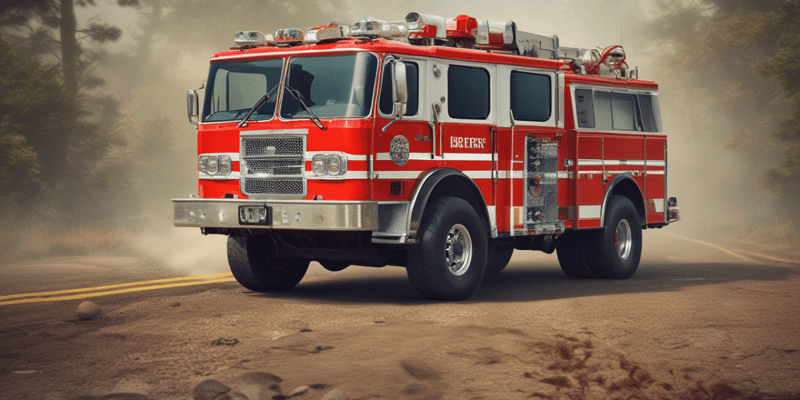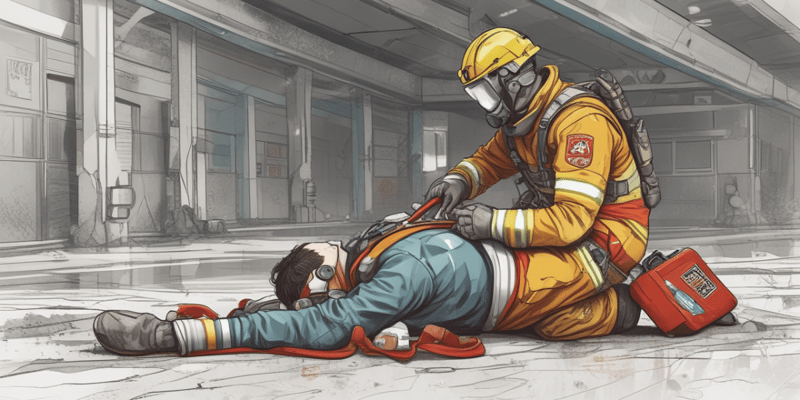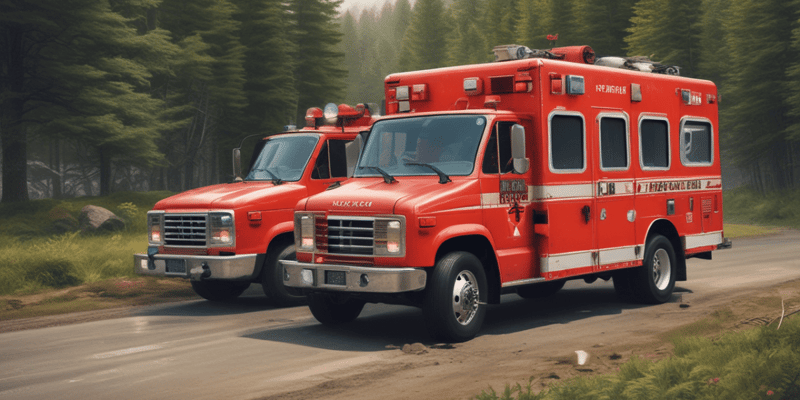Questions and Answers
What is the upper limit of weight an individual fire department member is advised to lift?
In lift assist procedures for a bariatric patient, what is the minimum number of companies required?
What kind of procedure should be conducted for a person needing lifting assistance who denies injury?
What must be done first when using an elevator in Phase II for EMS operations?
Signup and view all the answers
Which type of patient lift does not require an EMSA response?
Signup and view all the answers
What is the first step in capturing an elevator car for use by TFD personnel?
Signup and view all the answers
Which step involves inserting the key back into the captured car station switch?
Signup and view all the answers
What should be done to reset the elevator to normal operation after the patient has exited?
Signup and view all the answers
Which step involves keeping the door close and door open button held throughout the cycle?
Signup and view all the answers
Where should the fire service elevator key be returned after normal operation is resumed?
Signup and view all the answers
Study Notes
Lift Assist Procedures
- The Tulsa Fire Department limits individual lifting to 75 pounds per person, but may exceed this limit in certain situations.
- In such situations, members should use appropriate lifting techniques whenever possible.
Assist With Lifting: Person in Distress, No Injury
- People needing lifting assistance but denying injury should receive a brief medical exam to rule out hidden injuries.
- Fire crews should use proper lifting techniques to restore the person to their desired location.
- Lift assists without injury do not require an EMSA response.
Lift Assist with Injury or a Subject with a Medical Complaint
- These incidents should be treated as medical emergencies.
- They require a full patient assessment, medical care by TFD crews, and an EMSA response.
Bariatric Patient Lifts
- Responses to bariatric patients (those weighing over 350 pounds) should involve at least two companies.
- Disposable "heavy patient movers" should be used as directed by the manufacturer when lifting or moving bariatric patients.
Elevator Use for Medical Operations
Elevators for EMS Operations
- Elevators in Phase II can be used for quick access and transportation of patients in medical emergency incidents.
- The best option is to have a building representative operate the elevator when possible.
- If not possible, TFD personnel should follow specific procedures to capture and operate the elevator.
Studying That Suits You
Use AI to generate personalized quizzes and flashcards to suit your learning preferences.
Description
This quiz covers the guidelines and procedures for lift assist situations in the Tulsa Fire Department, including individual lifting limits and techniques.




